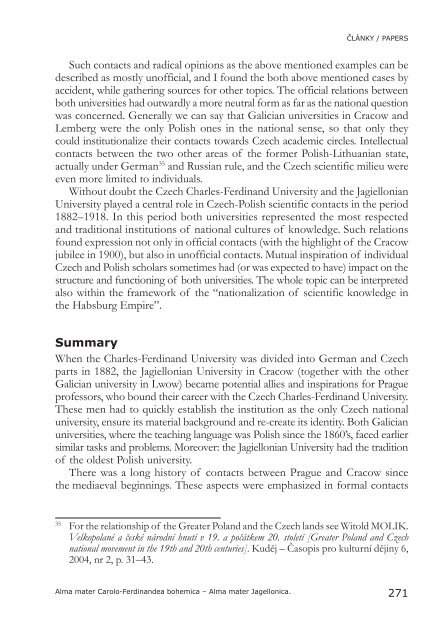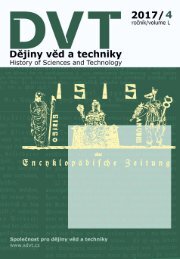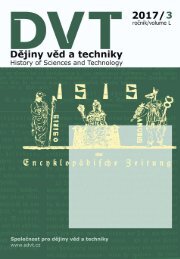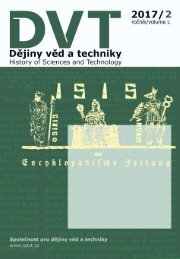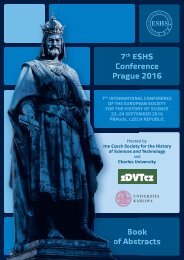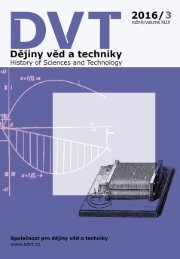Dějiny věd a techniky 2015, 4
Číslo je věnováno 7. mezinárodní konferenci Evropské společnosti pro dějiny vědy, která se konala 22.–24. září 2016 v Praze.
Číslo je věnováno 7. mezinárodní konferenci Evropské společnosti pro dějiny vědy, která se konala 22.–24. září 2016 v Praze.
Create successful ePaper yourself
Turn your PDF publications into a flip-book with our unique Google optimized e-Paper software.
ČLÁNKY / PAPERS<br />
Such contacts and radical opinions as the above mentioned examples can be<br />
described as mostly unofficial, and I found the both above mentioned cases by<br />
accident, while gathering sources for other topics. The official relations between<br />
both universities had outwardly a more neutral form as far as the national question<br />
was concerned. Generally we can say that Galician universities in Cracow and<br />
Lemberg were the only Polish ones in the national sense, so that only they<br />
could institutionalize their contacts towards Czech academic circles. Intellectual<br />
contacts between the two other areas of the former Polish-Lithuanian state,<br />
actually under German 35 and Russian rule, and the Czech scientific milieu were<br />
even more limited to individuals.<br />
Without doubt the Czech Charles-Ferdinand University and the Jagiellonian<br />
University played a central role in Czech-Polish scientific contacts in the period<br />
1882–1918. In this period both universities represented the most respected<br />
and traditional institutions of national cultures of knowledge. Such relations<br />
found expression not only in official contacts (with the highlight of the Cracow<br />
jubilee in 1900), but also in unofficial contacts. Mutual inspiration of individual<br />
Czech and Polish scholars sometimes had (or was expected to have) impact on the<br />
structure and functioning of both universities. The whole topic can be interpreted<br />
also within the framework of the “nationalization of scientific knowledge in<br />
the Habsburg Empire”.<br />
Summary<br />
When the Charles-Ferdinand University was divided into German and Czech<br />
parts in 1882, the Jagiellonian University in Cracow (together with the other<br />
Galician university in Lwow) became potential allies and inspirations for Prague<br />
professors, who bound their career with the Czech Charles-Ferdinand University.<br />
These men had to quickly establish the institution as the only Czech national<br />
university, ensure its material background and re-create its identity. Both Galician<br />
universities, where the teaching language was Polish since the 1860’s, faced earlier<br />
similar tasks and problems. Moreover: the Jagiellonian University had the tradition<br />
of the oldest Polish university.<br />
There was a long history of contacts between Prague and Cracow since<br />
the mediaeval beginnings. These aspects were emphasized in formal contacts<br />
35<br />
For the relationship of the Greater Poland and the Czech lands see Witold MOLIK.<br />
Velkopolané a české národní hnutí v 19. a počátkem 20. století [Greater Poland and Czech<br />
national movement in the 19th and 20th centuries]. Kuděj – Časopis pro kulturní dějiny 6,<br />
2004, nr 2, p. 31–43.<br />
Alma mater Carolo-Ferdinandea bohemica – Alma mater Jagellonica.<br />
271


